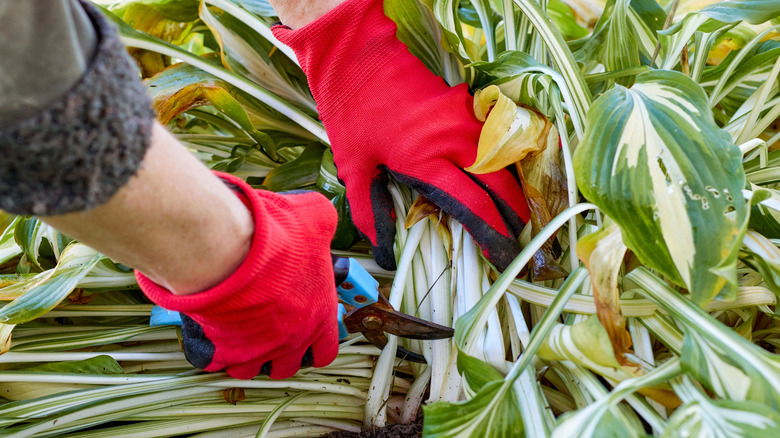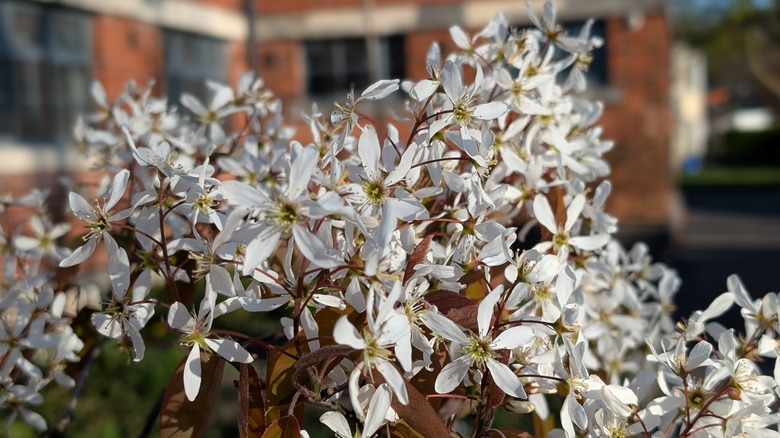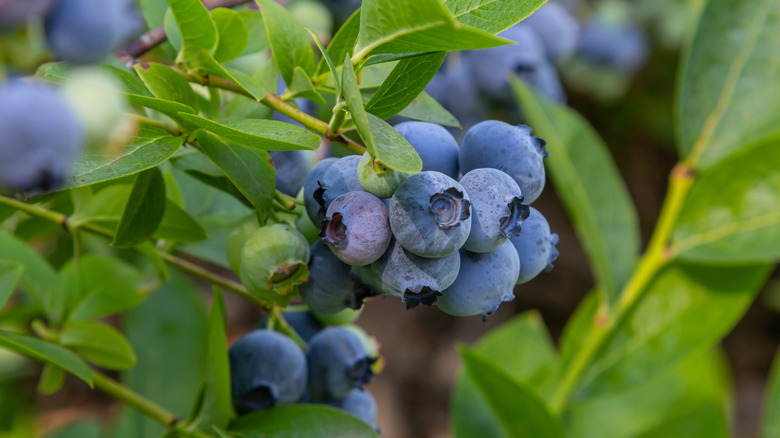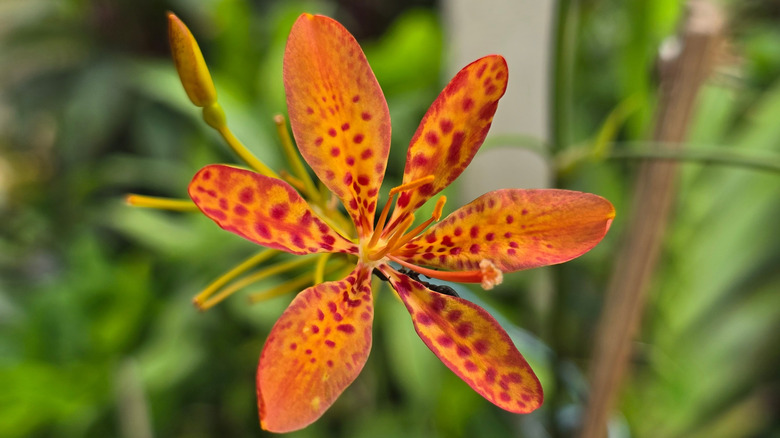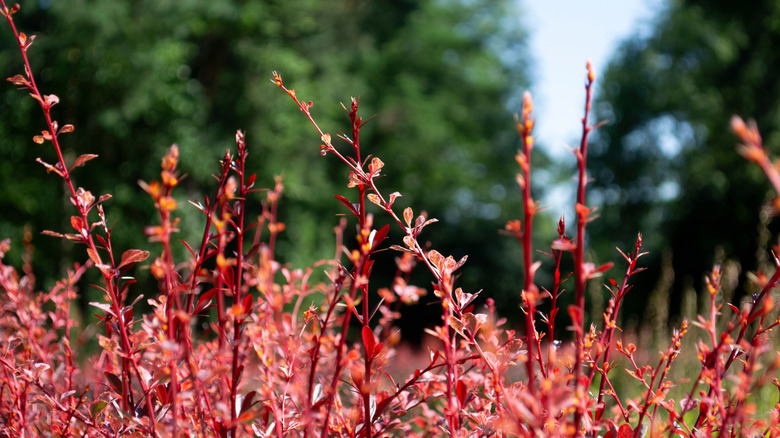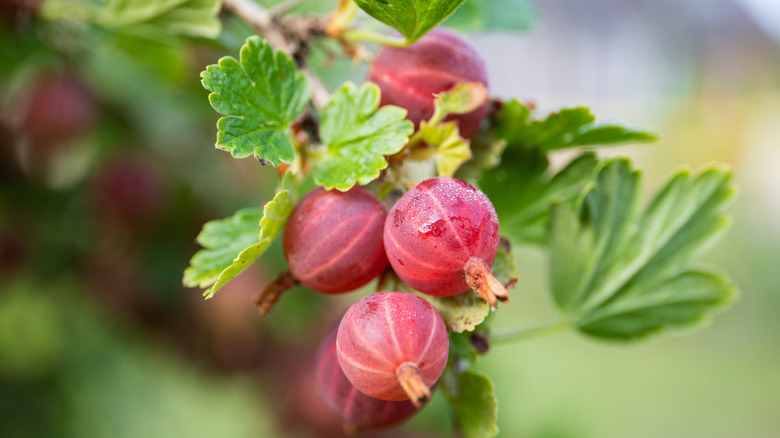Don't Wait: Prune These 10 Plants In November For Your Best Garden Next Spring
Regardless of the season, there is almost always a garden to-do list that you can be working on. In November, for example, there are a handful of plants that you can prune so that they come back brighter, bigger, and better when spring rolls around. Of course, there are plenty of plants to avoid pruning in November (such as lilacs and oakleaf hydrangeas), but some plants — including many fruits like apples, pears, blueberries, and grapes — can really benefit from a little end-of-the-year trim.
If you've planted a bunch of perennials, then pruning is an essential part of growing a healthy garden. Unfortunately, it can feel like a year-round task, since different plants need pruning at different times of the year. But when done correctly, pruning offers a myriad of benefits for your plants like improved health, improved appearance, and encouraging more fruit or flower production. So as winter slowly approaches, why not look ahead and start planning for the lush spring garden of your dreams?
Apple & Pear Trees
Fruit trees like the ones that bear apples and pears, should be pruned every year in November to help them keep their shape and produce quality fruit. You will want the crown of your tree to boast well-spaced branches that allow enough air and light to pass through. This will encourage better fruit and lower the risk of a pest invasion. Just remember, if you want to prune your trees the right way without calling a pro, you'll need the right tools. In addition to pruning shears, a lopper and a folding saw may also be required.
Serviceberry
Serviceberry (Amelanchier spp.) produces gorgeous white flowers in the spring and sweet fruit in the summer. The plant is hardy in zones 3 through 9 and enjoys access to full sun and moist, well-draining soil. While serviceberry should be pruned in November to maintain shape and to remove the oldest and weakest branches, it's important to not go overboard. If you're not careful, you can accidentally cut off next year's blossoms.
Blueberry
Hardy in zones 5 through 8, highbush blueberry (Vaccinium corymbosum) should be pruned annually once the plant has been in your garden for at least three years. Pruning takes place during the plant's dormant period which can start as early as November, depending on the climate where you live. Focus on pruning back the sections of the plant that are obviously dead to help encourage new growth in the spring.
Herbaceous Peony
For herbaceous peonies (Paeonia lactiflora), you will want to prune them after the first frost, when the foliage turns yellow. Depending on your location, this often lands in November. Herbaceous peonies are hardy in zones 3 through 8 and can survive with either full sun or partial shade. The plant prefers a moist, well-drained soil that's rich and fertile. When healthy, peonies produce huge spring blooms (usually blooming by May) that can be pink, white, or red with a yellow center.
Blackberry Lily
Although you don't technically need to prune Blackberry Lily (Belamcanda chinensis), the plant — and your garden as a whole — will still benefit from the process. In November, cut back any old stems or yellowing foliage. This will encourage new, green growth in the spring and remove a hiding place for unwanted pests. Additionally, remove the flower's seed heads to prevent it from spreading wild throughout your garden. Blackberry lilies are hardy zones 8 to 10 but have been reported to survive in zone 4 as well.
Barberry
Before you set out to prune your common barberry (Berberis vulgaris), make sure you have a good pair of gardening gloves, as the thorns on this plant can be quite intense. Hardy in zones 3 to 7, the deciduous shrub can be pruned late in the season when it's entered dormancy, often in November. This pruning will help maintain its shape and remove dead, unsightly wood for a better-looking plant next spring.
Hostas
Hostas (Hosta plantaginea) will benefit from being cut back in the fall. Although pruning isn't technically necessary, cutting away dead foliage in November (or after the first frost), will help keep slugs, mold, and mildew at bay leaving you with vibrant new shoots in the spring. Hostas are hardy in zones 3 through 9 and thrive in environments with full to partial shade. In addition to combating slugs and mildew, cutting back your hostas in late fall will leave you with a neat and tidy-looking garden through winter.
Grape
Late November is the main pruning time for common grape vines (Vitis vinifera). If you wait too long into the winter season, you run the risk of losing sap from the vines. Pruning helps remove unnecessary growth and increase fruit and flower production. Hardy in zones 6 to 9, grapes produce small flower clusters in the spring and the popular fruit which ripens in the summer.
Gooseberry
Hardy in zones 4 to 8, Gooseberry (Ribes uva-crispa 'Captivator') goes dormant in late autumn, making it a great time to prune the plant. If you want a healthy and hearty blooming season come spring, then pruning in November can help. The goal with pruning these bushes should be to keep the stem spaced out and under control. The spacing will keep your fruitful branches from getting tangled together, which encourages mildew. Pruning will also allow better access to sun, thus creating healthier fruit.
Blackcurrant
Established blackcurrants (Ribes nigrum 'Ben Sarek') that are two to three years old, can be pruned in the winter when the plant is dormant (it is hardy in zones 3 to 7). This happens as early as November and as late as February, depending on where you live. Pruning the fruit-producing plant is a way to remove branches that are no longer productive to make way for new growth in the spring.
